Marc Tyler Nobleman's Blog, page 32
July 7, 2018
"The Twilight Zone" interview: "Five Characters in Search of an Exit" (1961)
Introduction to the Twilight Zone interview series (including the list of interviewees).
Mona Houghton played a girl stopping at a charity donation station in "Five Characters in Search of an Exit" (season 3, 1961).
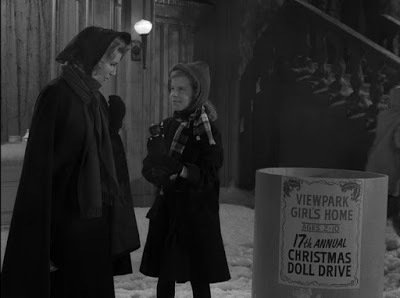
How old were you when you appeared on The Twilight Zone?
Ten.
How did you get the role?
My father was the producer of the show and I was the right age.
Any funny anecdotes about the experience?
I was a very active kid. I am sure in today's world I would have been heavily dosed with Ritalin, but in the fifties, people seemed to understand that kids needed to run around. My need was extreme. On the day of the shoot, I do remember my father, who understood me and knew full well that there might be several takes of the scene I was in, spent most of the morning walking me around the back lot at in the hopes of depleting my seemingly bottomless reservoir of energy.
Did anything go wrong during the shoot?
As I remember it, the day moved forward without a hitch.
If you had any interaction with Rod Serling, what do you remember about him?
I remember Rod more from seeing him with my father in social settings. They'd be having a scotch and smoking cigarettes and talking about Jack Kennedy or the Soviets launching the first man into outer space. Once in a while my father would take me to the "office" for the day. When I saw Rod on those occasions, he was friendly, but at the same time, they all had a lot to do. I think they made an episode of Twilight Zone in five days.
What did you think of your episode at the time?
At the time, I am not sure I really understood the full implications in the story. That came later.
After it aired, do you remember the initial reaction from family, friends, and the public?
Sorry. Drawing a blank here. I am sure my family and friends were supportive and I had no interaction with the public.
Did being on a hit show have any social/psychological impact on you as a kid (i.e. in school, on dates, etc.)?
I was pretty young. Not many of my friends even watched the show.
Did you watch the show regularly?
Yes, as a family we watched the show. My mother was pretty strict about TV viewing. As I remember it we were allowed about an hour or an hour and a half a week—and Twilight Zone was one of the shows we definitely caught.
At 9 and 10 many of the stories were over my head, and some of them were downright frightening. Of course I have watched them as an adult and have had the opportunity to appreciate Rod Serlings's genius, his insight—his ability to uncover some aspect of human nature and do it, 90% of the time, within the context of the day to day. And he could accomplish these feats all in a 30-minute TV format. It is pretty amazing when you think about it.
Did you act in anything else?
I was not a natural. I had been in one other TV show, an episode of Man With a Camera. My father was the producer on that show as well. (I always needed an in.) In that, my brother and I were in a house and the bad guy ran by on the sidewalk and threw a rock through the window. We were supposed to react to the sugar glass shattering all over us. All I really remember is being totally intrigued by the sugar glass (which tasted more like soap than sugar) and someone constantly telling me "Don't look at the camera."
What are you doing these days?
I am a writer. I wrote soap operas, a few episodes of episodic television (co-written with my brother), and then I turned to fiction. I taught writing for thirty years at California State University, Northridge.
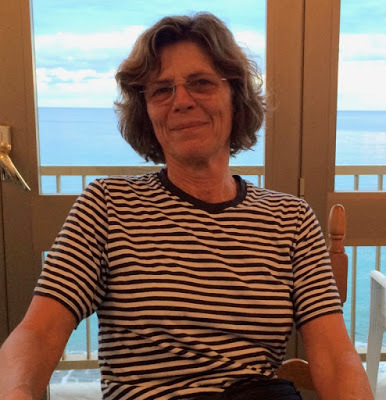
Where do you live?
I live in Laurel Canyon, about a 15-minute walk/hike from the house where I grew up.
If you have children/grandchildren, have they seen your Twilight Zone appearance, and if so, do you remember their reactions?
I have a niece and a nephew. They were impressed. They are both wonderful young adults.
Occasionally one of my CSUN students would make the connection. That was always fun. College students, like kids in K-12, still tend to view their teachers through very narrow lenses and so they are often surprised to find out that their teacher has a life outside the space where s/he interacts with them, especially when the activity is something as loaded as Twilight Zone.
Have you participated in a Twilight Zone event (reunion, convention, documentary, etc.)? If not, would you be open to doing so (i.e. meeting fans and signing autographs)?
I haven't—but answering these questions has been so fun, I wouldn't mind being part of an event at all.
Are you still in touch with anyone who knew you when you appeared on the show?
My brother…that's about it. And we are a close family.
When was the last time you watched the episode? How did you think it held up?
I haven't seen it in years. But I do see one or two episodes of Twilight Zone a year for one reason or another. They are all pretty amazing. As I said before, Rod Serling had insight into how we humans work and that always holds up.
Do you have any mementos from the experience such as candid photos, the script, or anything from the set? Autographed cigarette from Rod Serling?
Sorry, I wish I did.
Have you been interviewed before about this specifically?
I have a small blurb in Steve Rubin's book The Twilight Zone Encyclopedia. It isn't an interview but there is a paragraph in the book about "Five Characters in Search of an Exit" and there is a brief bio on me there.
Do you have clippings from magazine/newspaper interviews/profiles published at the time?
No.
What did you think when you first heard from me?
I didn't realize how fun it would be to go back and think about all this.
How do you look back on your Twilight Zone experience?
It was a good time. When I look back, it is more about a period of time in my life—the years when my dad was working on the show.
If the experience changed your life in any way, how?
No…it didn't change my life. I guess you could say the experience let me know early on that acting was not for me, but then I never ever even engaged in the fantasy, so who knows.
Anything you'd like to add?
It always amazed me how that signature Twilight Zone tune was a signifier for so many generations. As I said, I taught at CSUN for thirty years. Whenever something weird happened in class, someone would sing that Twilight Zone theme music and 99% of the time no one had a clue about the connection between me and the show. That riff is simply a part of our common language. That says a lot…
Thank you for giving me this opportunity.
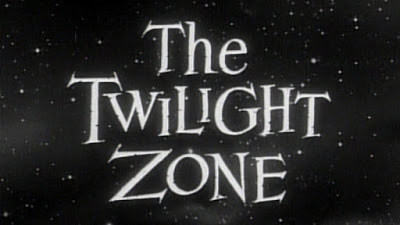
Mona Houghton played a girl stopping at a charity donation station in "Five Characters in Search of an Exit" (season 3, 1961).

How old were you when you appeared on The Twilight Zone?
Ten.
How did you get the role?
My father was the producer of the show and I was the right age.
Any funny anecdotes about the experience?
I was a very active kid. I am sure in today's world I would have been heavily dosed with Ritalin, but in the fifties, people seemed to understand that kids needed to run around. My need was extreme. On the day of the shoot, I do remember my father, who understood me and knew full well that there might be several takes of the scene I was in, spent most of the morning walking me around the back lot at in the hopes of depleting my seemingly bottomless reservoir of energy.
Did anything go wrong during the shoot?
As I remember it, the day moved forward without a hitch.
If you had any interaction with Rod Serling, what do you remember about him?
I remember Rod more from seeing him with my father in social settings. They'd be having a scotch and smoking cigarettes and talking about Jack Kennedy or the Soviets launching the first man into outer space. Once in a while my father would take me to the "office" for the day. When I saw Rod on those occasions, he was friendly, but at the same time, they all had a lot to do. I think they made an episode of Twilight Zone in five days.
What did you think of your episode at the time?
At the time, I am not sure I really understood the full implications in the story. That came later.
After it aired, do you remember the initial reaction from family, friends, and the public?
Sorry. Drawing a blank here. I am sure my family and friends were supportive and I had no interaction with the public.
Did being on a hit show have any social/psychological impact on you as a kid (i.e. in school, on dates, etc.)?
I was pretty young. Not many of my friends even watched the show.
Did you watch the show regularly?
Yes, as a family we watched the show. My mother was pretty strict about TV viewing. As I remember it we were allowed about an hour or an hour and a half a week—and Twilight Zone was one of the shows we definitely caught.
At 9 and 10 many of the stories were over my head, and some of them were downright frightening. Of course I have watched them as an adult and have had the opportunity to appreciate Rod Serlings's genius, his insight—his ability to uncover some aspect of human nature and do it, 90% of the time, within the context of the day to day. And he could accomplish these feats all in a 30-minute TV format. It is pretty amazing when you think about it.
Did you act in anything else?
I was not a natural. I had been in one other TV show, an episode of Man With a Camera. My father was the producer on that show as well. (I always needed an in.) In that, my brother and I were in a house and the bad guy ran by on the sidewalk and threw a rock through the window. We were supposed to react to the sugar glass shattering all over us. All I really remember is being totally intrigued by the sugar glass (which tasted more like soap than sugar) and someone constantly telling me "Don't look at the camera."
What are you doing these days?
I am a writer. I wrote soap operas, a few episodes of episodic television (co-written with my brother), and then I turned to fiction. I taught writing for thirty years at California State University, Northridge.

Where do you live?
I live in Laurel Canyon, about a 15-minute walk/hike from the house where I grew up.
If you have children/grandchildren, have they seen your Twilight Zone appearance, and if so, do you remember their reactions?
I have a niece and a nephew. They were impressed. They are both wonderful young adults.
Occasionally one of my CSUN students would make the connection. That was always fun. College students, like kids in K-12, still tend to view their teachers through very narrow lenses and so they are often surprised to find out that their teacher has a life outside the space where s/he interacts with them, especially when the activity is something as loaded as Twilight Zone.
Have you participated in a Twilight Zone event (reunion, convention, documentary, etc.)? If not, would you be open to doing so (i.e. meeting fans and signing autographs)?
I haven't—but answering these questions has been so fun, I wouldn't mind being part of an event at all.
Are you still in touch with anyone who knew you when you appeared on the show?
My brother…that's about it. And we are a close family.
When was the last time you watched the episode? How did you think it held up?
I haven't seen it in years. But I do see one or two episodes of Twilight Zone a year for one reason or another. They are all pretty amazing. As I said before, Rod Serling had insight into how we humans work and that always holds up.
Do you have any mementos from the experience such as candid photos, the script, or anything from the set? Autographed cigarette from Rod Serling?
Sorry, I wish I did.
Have you been interviewed before about this specifically?
I have a small blurb in Steve Rubin's book The Twilight Zone Encyclopedia. It isn't an interview but there is a paragraph in the book about "Five Characters in Search of an Exit" and there is a brief bio on me there.
Do you have clippings from magazine/newspaper interviews/profiles published at the time?
No.
What did you think when you first heard from me?
I didn't realize how fun it would be to go back and think about all this.
How do you look back on your Twilight Zone experience?
It was a good time. When I look back, it is more about a period of time in my life—the years when my dad was working on the show.
If the experience changed your life in any way, how?
No…it didn't change my life. I guess you could say the experience let me know early on that acting was not for me, but then I never ever even engaged in the fantasy, so who knows.
Anything you'd like to add?
It always amazed me how that signature Twilight Zone tune was a signifier for so many generations. As I said, I taught at CSUN for thirty years. Whenever something weird happened in class, someone would sing that Twilight Zone theme music and 99% of the time no one had a clue about the connection between me and the show. That riff is simply a part of our common language. That says a lot…
Thank you for giving me this opportunity.

Published on July 07, 2018 04:00
July 6, 2018
"The Twilight Zone" interview: "Night of the Meek" (1960)
Introduction to the Twilight Zone interview series (including the list of interviewees).
Larrian Gillespie played the North Pole elf in "Night of the Meek" (season 2, 1960).
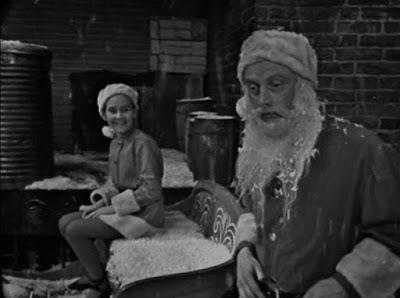
How old were you when you were cast in The Twilight Zone?
Eleven.
How did you get the role?
I did not audition. I believe the casting agent knew my previous work and I was told to show up at, I believe, CBS in the evening, and to bring my tights and ballet slippers.
Any funny anecdotes about the experience?
It's not funny, per se, but something I won't forget: before shooting, Rod Serling was walking along the street scene and asking the children what they wanted for Christmas. I told him I wanted a Ginny doll. He took me over to my mom, who was my guardian on the set, and said "Your daughter is very special. I asked the children what they wanted and most said things like a mink coat, a car, etc. But your child wants a Terri Lee doll. I hope Santa brings her one." And he did. So I credit Mr. Serling with my Terri Lee doll in a majorette outfit…which I still have today.
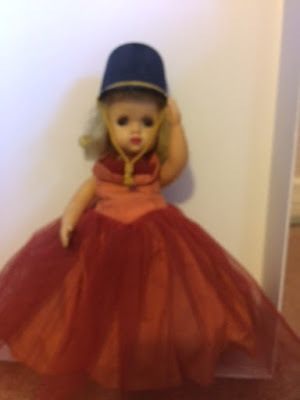
Did anything go wrong during the shoot?
Not that it went wrong, but in rehearsal, I was told to jump out from behind the trash cans when the lights when on. I was behind the cans with the jingle bells, and they would cue me to shake them. I was then to put them down and wait for the lights to go on. However, Art Carney did not make it to the sleigh in time, so I hesitated until I could see him at the sleigh. So if you watch that scene, there is a delay before I pop out, which worried the stage manager a lot, making him think I had frozen and was not going to jump out. Remember, this was all shot in one continuous take.
What was Art Carney like?
He was very nice. However, at the time, he had an alcohol problem and had not worked in a long time. My mother was very worried about my working with him. But, of course, it was her fear, not mine. He was totally professional, knew his lines and marks, and did an outstanding job.
Your episode became one of the most iconic of the series. What did you think of it at the time?
I thought it was a good story. I assumed, incorrectly, that Mr. Serling would do one every year…so no big deal.
After it aired, do you remember the initial reaction from family, friends, and the public?
Nothing exceptional. However, Rod Serling's daughter told me that her father never watched any of his shows except "Night of the Meek," every year, as a family. He felt it was his best episode.
Did being on what became a hit show have any social/psychological impact on you as a kid (i.e. in school, on dates, etc.)?
I always wanted to be a doctor, so this was a means to earn money to go to college and medical school. I learned discipline, a strong work ethic, conscientiousness, and the ability to speak in fearful situations. Served me well as a surgeon!
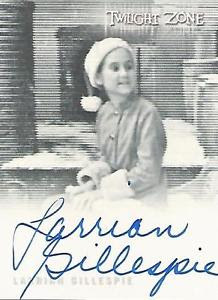
Did you watch the show regularly?
No. However, some years my grandchildren watch it at Christmas. And every year we set out the photo of me in the sleigh with Santa by the cookies and milk.
When your children/grandchildren watched, what was the reaction?
"Can we build Legos now?"
How long did your acting career last, and why did it end?
I acted until age 17, when I graduated from high school. Then my focus was on getting through college in three years and getting accepted into medical school…which I did, at UCLA.
Did you ever miss acting?
Sometimes I think I would like to go back now in my retirement, but then I lay down until the thought passes over me!
What are you doing these days?
I retired as a genitourinary surgeon. I trained at the pastry school Ducasses Education in Paris, studied cheese with Hervé and Laurent Mons/Max McCalman, and went to Italy to study olive oil. I have a company that has developed a food flavor database that stimulates the release of dopamine in the brain through flavor combinations unique to each individual. (Bet you are sorry you asked!)
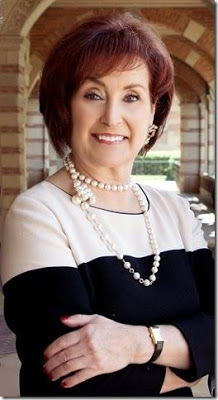
Where do you live?
Los Angeles.
Have you participated in a Twilight Zone event (reunion, convention, documentary, etc.)? If not, would you be open to doing so (i.e. meeting fans and signing autographs)?
I did the two conventions and thoroughly enjoyed them.
Are you still in touch with anyone who knew you when you appeared on the show?
No.
When was the last time you watched the episode? How did you think it held up?
I think the episode is timeless…and watched it this Christmas.
Do you have any mementos from the experience such as candid photos, the script, or anything from the set? Autographed cigarette from Rod Serling?
No.
Have you been interviewed before about this specifically?
Yes.
Do you have clippings from magazine/newspaper interviews/profiles published at the time?
No.
What did you think when you first heard from me?
Another person appreciating the Golden Era of Television and the era when writers wrote fantastic plays.
How do you look back on your Twilight Zone experience?
With warmth and laughter.

Larrian Gillespie played the North Pole elf in "Night of the Meek" (season 2, 1960).

How old were you when you were cast in The Twilight Zone?
Eleven.
How did you get the role?
I did not audition. I believe the casting agent knew my previous work and I was told to show up at, I believe, CBS in the evening, and to bring my tights and ballet slippers.
Any funny anecdotes about the experience?
It's not funny, per se, but something I won't forget: before shooting, Rod Serling was walking along the street scene and asking the children what they wanted for Christmas. I told him I wanted a Ginny doll. He took me over to my mom, who was my guardian on the set, and said "Your daughter is very special. I asked the children what they wanted and most said things like a mink coat, a car, etc. But your child wants a Terri Lee doll. I hope Santa brings her one." And he did. So I credit Mr. Serling with my Terri Lee doll in a majorette outfit…which I still have today.

Did anything go wrong during the shoot?
Not that it went wrong, but in rehearsal, I was told to jump out from behind the trash cans when the lights when on. I was behind the cans with the jingle bells, and they would cue me to shake them. I was then to put them down and wait for the lights to go on. However, Art Carney did not make it to the sleigh in time, so I hesitated until I could see him at the sleigh. So if you watch that scene, there is a delay before I pop out, which worried the stage manager a lot, making him think I had frozen and was not going to jump out. Remember, this was all shot in one continuous take.
What was Art Carney like?
He was very nice. However, at the time, he had an alcohol problem and had not worked in a long time. My mother was very worried about my working with him. But, of course, it was her fear, not mine. He was totally professional, knew his lines and marks, and did an outstanding job.
Your episode became one of the most iconic of the series. What did you think of it at the time?
I thought it was a good story. I assumed, incorrectly, that Mr. Serling would do one every year…so no big deal.
After it aired, do you remember the initial reaction from family, friends, and the public?
Nothing exceptional. However, Rod Serling's daughter told me that her father never watched any of his shows except "Night of the Meek," every year, as a family. He felt it was his best episode.
Did being on what became a hit show have any social/psychological impact on you as a kid (i.e. in school, on dates, etc.)?
I always wanted to be a doctor, so this was a means to earn money to go to college and medical school. I learned discipline, a strong work ethic, conscientiousness, and the ability to speak in fearful situations. Served me well as a surgeon!

Did you watch the show regularly?
No. However, some years my grandchildren watch it at Christmas. And every year we set out the photo of me in the sleigh with Santa by the cookies and milk.
When your children/grandchildren watched, what was the reaction?
"Can we build Legos now?"
How long did your acting career last, and why did it end?
I acted until age 17, when I graduated from high school. Then my focus was on getting through college in three years and getting accepted into medical school…which I did, at UCLA.
Did you ever miss acting?
Sometimes I think I would like to go back now in my retirement, but then I lay down until the thought passes over me!
What are you doing these days?
I retired as a genitourinary surgeon. I trained at the pastry school Ducasses Education in Paris, studied cheese with Hervé and Laurent Mons/Max McCalman, and went to Italy to study olive oil. I have a company that has developed a food flavor database that stimulates the release of dopamine in the brain through flavor combinations unique to each individual. (Bet you are sorry you asked!)

Where do you live?
Los Angeles.
Have you participated in a Twilight Zone event (reunion, convention, documentary, etc.)? If not, would you be open to doing so (i.e. meeting fans and signing autographs)?
I did the two conventions and thoroughly enjoyed them.
Are you still in touch with anyone who knew you when you appeared on the show?
No.
When was the last time you watched the episode? How did you think it held up?
I think the episode is timeless…and watched it this Christmas.
Do you have any mementos from the experience such as candid photos, the script, or anything from the set? Autographed cigarette from Rod Serling?
No.
Have you been interviewed before about this specifically?
Yes.
Do you have clippings from magazine/newspaper interviews/profiles published at the time?
No.
What did you think when you first heard from me?
Another person appreciating the Golden Era of Television and the era when writers wrote fantastic plays.
How do you look back on your Twilight Zone experience?
With warmth and laughter.

Published on July 06, 2018 04:00
July 5, 2018
"The Twilight Zone" interview: "The Monsters Are Due on Maple Street" (1960)
Introduction to the Twilight Zone interview series (including the list of interviewees).
Jan Lawrence Handzlik played what appeared to be the lone child in "The Monsters Are Due on Maple Street" (season 1, 1960).
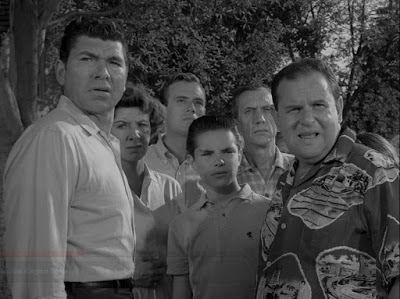
How old were you when you were cast in The Twilight Zone?
About 12.
How did you get the role?
I had a short cinematic career. You could have a Jan Handzlik Film Festival in one evening.
My acting career had begun when I was six or seven. I was a pretty confident and independent young man—that's what my mother had instilled in me and what I've tried to instill in my kids. My mother was an operatic singer. Part of that was being in summer stock in New England. I'd go with her and get parts in the shows. My professional acting career began as kind of a fluke in 1956. I think we were living in Connecticut. My mother's agent told her that there was a Broadway show being cast and they needed a boy my age and would I be interested. She never pushed me. As a matter of fact, she encouraged me to get a good education and have something to fall back on.
So probably along with 500 other kids—I'm not exaggerating—I read for the part of young Patrick in Auntie Mame. I had maybe three callbacks and eventually read with Rosalind Russell. She picked me. That was August or September 1958. I was in the show for a year and a half.
In what might be one of the few times in the history of Broadway, [a show's star] took a vacation, so the show shut down for that time! When Rosalind left the show, Greer Garson took over. When they were casting the movie, Rosalind said "I want Jan." Believe it or not, there was a tug of war over me between Rosalyn and Greer! But I left the show to do the movie.
The only other thing of note that I did was this Twilight Zone. Someone—not Rod Serling—was auditioning a handful of kids. A producer or someone who had seen me in Auntie Mame two years before remembered me and that's how I got the job.
Any funny anecdotes about the experience?
All I can remember that Jack Weston was hilarious on stage and off. He's a terrific actor. As I recall, he kept things pretty light.
Did anything go wrong during the shoot?
Something always goes wrong! Things didn't work out as planned, like when the car starts in the driveway. On a couple of occasions, lights went on and off [when they were not supposed to] and whatnot.
Where was your episode filmed?
I was wracking my brain…I can't remember right now.
What do you remember about Rod Serling?
I have a very vivid memory of Rod Serling. He came to the readings. I remember sitting around a conference table and Mr. Serling was sitting pretty close to me as we ran through the lines. He changed a couple things as we went along. From my perspective at that age, he seemed like a pretty serious guy.
How was it to be (what appeared to be) the only kid on the shoot?
There were a bunch of other kids, I think. Or maybe that was Auntie Mame. I think early on there were other kids running around the neighborhood. But as a child actor you don't have [those kinds of] inhibitions. My mother had always treated me not like a baby—just talked to me like a normal person as I was growing up. I had an easy time speaking with the other actors. The part about me being the only kid didn't stick with me.
Your episode became one of the most iconic of the series. What did you think of it at the time?
Even when we were reading our lines with Rod Serling there, it was pretty clear that there was a message was being sent. Almost every Twilight Zone had a message, some sort of moral point it was making. [In my episode] it was right off the page. It was a situation where it didn't take much for adults, neighbors, and in some cases close friends to turn against each other. I recognized the moral was we are our own worst enemies—as we have found out [again] in the last couple of years.
After it aired, do you remember the initial reaction from family, friends, and the public?
From friends, yes. Again, it was on different levels. Kids thought it was scary-funny and entertaining. Adults pointed out the message that was pretty clear. As time has gone by, it has not lost its meaning.
Did being on what became a hit show have any social/psychological impact on you as a kid (i.e. in school, on dates, etc.)?
When I was a kid, yes. It was a must-watch show for a lot of people. Everyone I knew saw me in it.
I went to a private school called Hollywood Professional School for 9th to 11th grade, and I had status—but not as much as some of the other kids there. Peter Fonda was there. I came back to New York in 12th grade and went to another acting school, Quintanos. Gregory Hines and Christopher Walken were there.
[Though my Twilight Zone episode] had an immediate impact, I think the more interesting aspect is that it still has impact today. I don't actually tell people [I was on the show], but when they find out and ask what episode, they know it right away. I wouldn't say this happens every week, but it does happen all the time. There isn't a couple-week period where I don't get a request in the mail for an autograph (for Auntie Mame, too).
Do you keep up with the autograph requests?
I do answer them and sign the photographs they send. If someone's going to go through that much trouble, I honor it. Also, my kids like when I do it. How many people are remembered for something they did so long ago?
Did you watch the show regularly?
Yes. I was a fan but I guess I became a bigger fan because of my involvement.
How long did your acting career last, and why did it end?
While I was doing the Auntie Mame movie, they were forming the national touring company of the show and I was offered the role, but that didn't seem attractive to my mother or me. My mother was in 11 Broadway shows in New York. If we'd stayed in Los Angeles, it's possible I would have had a longer career. Of course, that's just my ego speaking! [There were other factors.] You can almost hear it in my voice in Twilight Zone that my voice was changing. I say I didn't leave show business, show business left me. I used the money I made in acting to pay for part of college.
Did you ever miss acting?
I didn't then, though I can't remember for sure—sounds better if I say I didn't!
What are you doing these days?
I practice law—white collar criminal defense, fraud cases, some civil litigation. I now have my own firm. I'm not handling as many cases as I used to but I'm still enjoying it. There's a natural theatrical quality to being a trial lawyer. It takes some other people maybe a bit more time to get used to speaking in public.
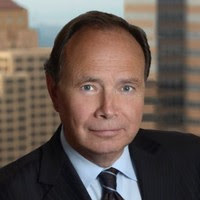
Where do you live?
Manhattan Beach, CA.
Children/grandchildren?
I have six children. Three of them are older—Grant, Craig, and Anna Sekulow [married to Jordan Sekulow, son of Jay Sekulow, one of Donald Trump's lawyers]. Three are younger—12-year-old twins Jake and Maggie and 9-year-old Wyatt. I have four grandkids.
What do your kids think of your Twilight Zone appearance?
They think it's great. It holds their attention for maybe 15 minutes. (laughs)
Have you participated in a Twilight Zone event (reunion, convention, documentary, etc.)? If not, would you be open to doing so?
I went to one Twilight Zone show about ten years ago or maybe even 20. Lots of stars were there. I was so unknowledgeable about these things that I didn't bring my own photos. You're supposed to bring them to sell them! So they gave me some photographs and I signed them. I either donated the money to charity or gave it to my kids.
I would go to another Twilight Zone convention but I wouldn't go to something just to sign things. I'd take my younger kids with me. They'd love it.
Are you still in touch with anyone who knew you when you appeared on the show?
Yes, a good friend named Bob. He's a teacher, not in acting. That may be it who goes back that far. I did bump into Gregory Hines with his father at a restaurant in Venice, California.
When was the last time you watched the episode?
I've watched it recently with my kids. When it's on one of the Twilight Zone marathons, my friends will tell me.
Do you have any mementos from the experience such as candid photos, the script, or anything from the set? Autographed cigarette from Rod Serling?
I'm pretty sure I have some photos but nothing else. I've gotten residuals for the Twilight Zone, sometimes 13 cents or $1.25. It's probably been four years since the last residual.
Have you been interviewed before about this specifically?
I don't think so. If I was, it was a long time ago.
What did you think when you first heard from me?
I was delighted. You keep the memories alive by doing things like what you're doing.
How do you look back on your Twilight Zone experience?
It was a great experience. A lot of nice people, very talented character actors. They made it look easy, not that it's brain surgery or Macbeth. I was honored to be in the cast with Claude Akins and Jack Weston. A very positive experience.
Funny since it was a show about how people can be so nasty to each other.
Yes. (laughs)
If the experience changed your life in any way, how?
I will give you a good lawyer's answer: yes and no. Being in a Broadway show, a major motion picture, and an episode of a popular TV show certainly has affected me, if not changed my life. It's given me recognition far beyond what I should have gotten! Just having had the experience was invaluable.

Postscript:
Toward the end of our conversation, Jan mentioned the Jordan Peele Twilight Zone reboot that was announced in late 2017. We decided he should try to reach out to Jordan's camp to see about appearing in the new series. Superhero shows regularly bring in legacy actors and I'm confident Twilight Zone is geeky enough to do the same! In fact, if Jan is cast, we'll also suggest the other alum included in this interview series. Stay tuned…
Jan Lawrence Handzlik played what appeared to be the lone child in "The Monsters Are Due on Maple Street" (season 1, 1960).

How old were you when you were cast in The Twilight Zone?
About 12.
How did you get the role?
I had a short cinematic career. You could have a Jan Handzlik Film Festival in one evening.
My acting career had begun when I was six or seven. I was a pretty confident and independent young man—that's what my mother had instilled in me and what I've tried to instill in my kids. My mother was an operatic singer. Part of that was being in summer stock in New England. I'd go with her and get parts in the shows. My professional acting career began as kind of a fluke in 1956. I think we were living in Connecticut. My mother's agent told her that there was a Broadway show being cast and they needed a boy my age and would I be interested. She never pushed me. As a matter of fact, she encouraged me to get a good education and have something to fall back on.
So probably along with 500 other kids—I'm not exaggerating—I read for the part of young Patrick in Auntie Mame. I had maybe three callbacks and eventually read with Rosalind Russell. She picked me. That was August or September 1958. I was in the show for a year and a half.
In what might be one of the few times in the history of Broadway, [a show's star] took a vacation, so the show shut down for that time! When Rosalind left the show, Greer Garson took over. When they were casting the movie, Rosalind said "I want Jan." Believe it or not, there was a tug of war over me between Rosalyn and Greer! But I left the show to do the movie.
The only other thing of note that I did was this Twilight Zone. Someone—not Rod Serling—was auditioning a handful of kids. A producer or someone who had seen me in Auntie Mame two years before remembered me and that's how I got the job.
Any funny anecdotes about the experience?
All I can remember that Jack Weston was hilarious on stage and off. He's a terrific actor. As I recall, he kept things pretty light.
Did anything go wrong during the shoot?
Something always goes wrong! Things didn't work out as planned, like when the car starts in the driveway. On a couple of occasions, lights went on and off [when they were not supposed to] and whatnot.
Where was your episode filmed?
I was wracking my brain…I can't remember right now.
What do you remember about Rod Serling?
I have a very vivid memory of Rod Serling. He came to the readings. I remember sitting around a conference table and Mr. Serling was sitting pretty close to me as we ran through the lines. He changed a couple things as we went along. From my perspective at that age, he seemed like a pretty serious guy.
How was it to be (what appeared to be) the only kid on the shoot?
There were a bunch of other kids, I think. Or maybe that was Auntie Mame. I think early on there were other kids running around the neighborhood. But as a child actor you don't have [those kinds of] inhibitions. My mother had always treated me not like a baby—just talked to me like a normal person as I was growing up. I had an easy time speaking with the other actors. The part about me being the only kid didn't stick with me.
Your episode became one of the most iconic of the series. What did you think of it at the time?
Even when we were reading our lines with Rod Serling there, it was pretty clear that there was a message was being sent. Almost every Twilight Zone had a message, some sort of moral point it was making. [In my episode] it was right off the page. It was a situation where it didn't take much for adults, neighbors, and in some cases close friends to turn against each other. I recognized the moral was we are our own worst enemies—as we have found out [again] in the last couple of years.
After it aired, do you remember the initial reaction from family, friends, and the public?
From friends, yes. Again, it was on different levels. Kids thought it was scary-funny and entertaining. Adults pointed out the message that was pretty clear. As time has gone by, it has not lost its meaning.
Did being on what became a hit show have any social/psychological impact on you as a kid (i.e. in school, on dates, etc.)?
When I was a kid, yes. It was a must-watch show for a lot of people. Everyone I knew saw me in it.
I went to a private school called Hollywood Professional School for 9th to 11th grade, and I had status—but not as much as some of the other kids there. Peter Fonda was there. I came back to New York in 12th grade and went to another acting school, Quintanos. Gregory Hines and Christopher Walken were there.
[Though my Twilight Zone episode] had an immediate impact, I think the more interesting aspect is that it still has impact today. I don't actually tell people [I was on the show], but when they find out and ask what episode, they know it right away. I wouldn't say this happens every week, but it does happen all the time. There isn't a couple-week period where I don't get a request in the mail for an autograph (for Auntie Mame, too).
Do you keep up with the autograph requests?
I do answer them and sign the photographs they send. If someone's going to go through that much trouble, I honor it. Also, my kids like when I do it. How many people are remembered for something they did so long ago?
Did you watch the show regularly?
Yes. I was a fan but I guess I became a bigger fan because of my involvement.
How long did your acting career last, and why did it end?
While I was doing the Auntie Mame movie, they were forming the national touring company of the show and I was offered the role, but that didn't seem attractive to my mother or me. My mother was in 11 Broadway shows in New York. If we'd stayed in Los Angeles, it's possible I would have had a longer career. Of course, that's just my ego speaking! [There were other factors.] You can almost hear it in my voice in Twilight Zone that my voice was changing. I say I didn't leave show business, show business left me. I used the money I made in acting to pay for part of college.
Did you ever miss acting?
I didn't then, though I can't remember for sure—sounds better if I say I didn't!
What are you doing these days?
I practice law—white collar criminal defense, fraud cases, some civil litigation. I now have my own firm. I'm not handling as many cases as I used to but I'm still enjoying it. There's a natural theatrical quality to being a trial lawyer. It takes some other people maybe a bit more time to get used to speaking in public.

Where do you live?
Manhattan Beach, CA.
Children/grandchildren?
I have six children. Three of them are older—Grant, Craig, and Anna Sekulow [married to Jordan Sekulow, son of Jay Sekulow, one of Donald Trump's lawyers]. Three are younger—12-year-old twins Jake and Maggie and 9-year-old Wyatt. I have four grandkids.
What do your kids think of your Twilight Zone appearance?
They think it's great. It holds their attention for maybe 15 minutes. (laughs)
Have you participated in a Twilight Zone event (reunion, convention, documentary, etc.)? If not, would you be open to doing so?
I went to one Twilight Zone show about ten years ago or maybe even 20. Lots of stars were there. I was so unknowledgeable about these things that I didn't bring my own photos. You're supposed to bring them to sell them! So they gave me some photographs and I signed them. I either donated the money to charity or gave it to my kids.
I would go to another Twilight Zone convention but I wouldn't go to something just to sign things. I'd take my younger kids with me. They'd love it.
Are you still in touch with anyone who knew you when you appeared on the show?
Yes, a good friend named Bob. He's a teacher, not in acting. That may be it who goes back that far. I did bump into Gregory Hines with his father at a restaurant in Venice, California.
When was the last time you watched the episode?
I've watched it recently with my kids. When it's on one of the Twilight Zone marathons, my friends will tell me.
Do you have any mementos from the experience such as candid photos, the script, or anything from the set? Autographed cigarette from Rod Serling?
I'm pretty sure I have some photos but nothing else. I've gotten residuals for the Twilight Zone, sometimes 13 cents or $1.25. It's probably been four years since the last residual.
Have you been interviewed before about this specifically?
I don't think so. If I was, it was a long time ago.
What did you think when you first heard from me?
I was delighted. You keep the memories alive by doing things like what you're doing.
How do you look back on your Twilight Zone experience?
It was a great experience. A lot of nice people, very talented character actors. They made it look easy, not that it's brain surgery or Macbeth. I was honored to be in the cast with Claude Akins and Jack Weston. A very positive experience.
Funny since it was a show about how people can be so nasty to each other.
Yes. (laughs)
If the experience changed your life in any way, how?
I will give you a good lawyer's answer: yes and no. Being in a Broadway show, a major motion picture, and an episode of a popular TV show certainly has affected me, if not changed my life. It's given me recognition far beyond what I should have gotten! Just having had the experience was invaluable.

Postscript:
Toward the end of our conversation, Jan mentioned the Jordan Peele Twilight Zone reboot that was announced in late 2017. We decided he should try to reach out to Jordan's camp to see about appearing in the new series. Superhero shows regularly bring in legacy actors and I'm confident Twilight Zone is geeky enough to do the same! In fact, if Jan is cast, we'll also suggest the other alum included in this interview series. Stay tuned…
Published on July 05, 2018 04:00
July 4, 2018
"The Twilight Zone" interviews: child actors from classic episodes
My formative years were an odd crucible of pop culture influences. The big three were DC Comics (perhaps you've heard),
The New Yorker
, and The Twilight Zone. Okay, so "odd" may be an understatement…
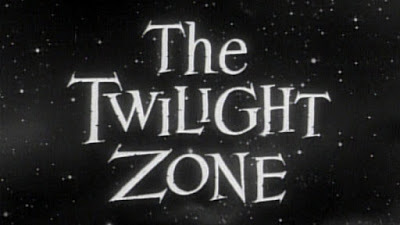
Other teens had outgrown superheroes (or so they said before superhero blockbuster movies made it cool for anyone to like capes), decorated their bedrooms with heavy metal band posters, and secretly got up in the middle of the night to watch softcore movies on Showtime.
But I still (secretly) looked at comics, openly decorated my room with the covers of a highbrow journalism magazine, and secretly got up in the middle of the night to watch Twilight Zone reruns (while eating ice cream sandwiches and drinking Ocean Spray cranberry-raspberry juice…ah, the invincibility of youth).
I devoured The Twilight Zone Companion (a well-researched episode guide).
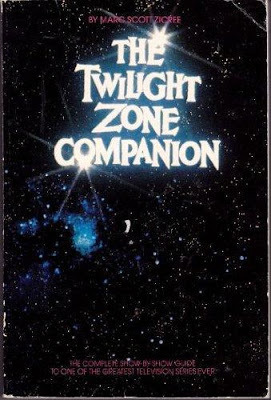
I wrote a Twilight Zone-style story called "Pulse by the Roadside" and worked hard to set up but not give away the twist. (It involved lightning and eyeglasses.)
And when I organized the fall 1988 convention for the Connecticut region of BBYO, my Jewish youth group, the theme was…doo doo doo doo, doo doo doo doo. Note my T-shirt:
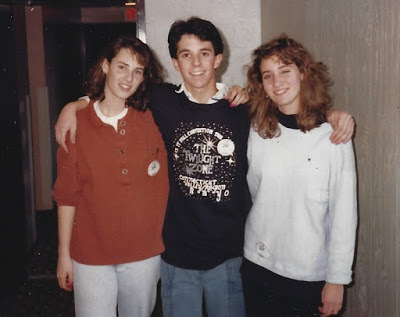 Drop T-Zone references, girls flock to you.
Drop T-Zone references, girls flock to you.
Close-up on that design:
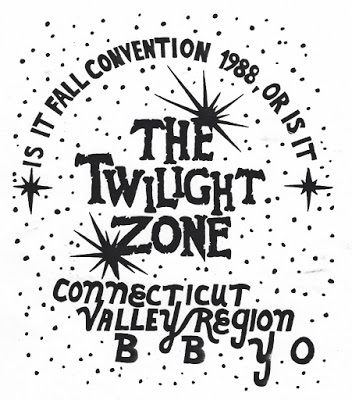
Can you spot the "typeface" inconsistency? Bugs me to this day.
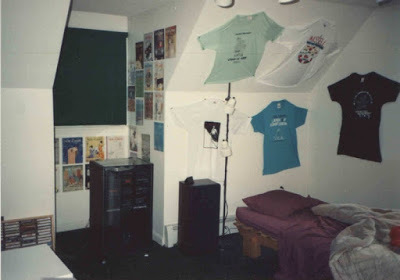
Though this early '90s photo of my bedroom is a bit fuzzy, you should still be able to make out both New Yorker covers and the Twilight Zone T-shirt on the walls.
So it was only a matter of time (enough at last) till I would find a way to feature original interviews pertaining to the original (1959-1964) series. I located child stars from five of the most iconic episodes and they kindly agreed to revisit the Twilight Zone. In most cases, they are the last surviving cast members from their respective episodes.
Submitted for your approval…
Jan Lawrence Handzlik, "The Monsters Are Due on Maple Street" (season 1, 1960)Larrian Gillespie, "Night of the Meek" (season 2, 1960)Mona Houghton, "Five Characters in Search of an Exit" (season 3, 1961)Tracy Stratford (now Shaw), "Little Girl Lost" (season 3, 1962) and "Living Doll" (season 5, 1963)
There's the signpost up ahead…

Other teens had outgrown superheroes (or so they said before superhero blockbuster movies made it cool for anyone to like capes), decorated their bedrooms with heavy metal band posters, and secretly got up in the middle of the night to watch softcore movies on Showtime.
But I still (secretly) looked at comics, openly decorated my room with the covers of a highbrow journalism magazine, and secretly got up in the middle of the night to watch Twilight Zone reruns (while eating ice cream sandwiches and drinking Ocean Spray cranberry-raspberry juice…ah, the invincibility of youth).
I devoured The Twilight Zone Companion (a well-researched episode guide).

I wrote a Twilight Zone-style story called "Pulse by the Roadside" and worked hard to set up but not give away the twist. (It involved lightning and eyeglasses.)
And when I organized the fall 1988 convention for the Connecticut region of BBYO, my Jewish youth group, the theme was…doo doo doo doo, doo doo doo doo. Note my T-shirt:
 Drop T-Zone references, girls flock to you.
Drop T-Zone references, girls flock to you.Close-up on that design:

Can you spot the "typeface" inconsistency? Bugs me to this day.

Though this early '90s photo of my bedroom is a bit fuzzy, you should still be able to make out both New Yorker covers and the Twilight Zone T-shirt on the walls.
So it was only a matter of time (enough at last) till I would find a way to feature original interviews pertaining to the original (1959-1964) series. I located child stars from five of the most iconic episodes and they kindly agreed to revisit the Twilight Zone. In most cases, they are the last surviving cast members from their respective episodes.
Submitted for your approval…
Jan Lawrence Handzlik, "The Monsters Are Due on Maple Street" (season 1, 1960)Larrian Gillespie, "Night of the Meek" (season 2, 1960)Mona Houghton, "Five Characters in Search of an Exit" (season 3, 1961)Tracy Stratford (now Shaw), "Little Girl Lost" (season 3, 1962) and "Living Doll" (season 5, 1963)
There's the signpost up ahead…
Published on July 04, 2018 04:00
July 2, 2018
Live models portraying DC Comics characters in print
The 1990s were a drought for live action DC Comics superheroes.
(Those days seem light-years from the current landscape, where the CW's Arrowverse has included dozens of unlikely characters from Gypsy to Ragman and a DC streaming service launching later this year will bring us Hawk and Dove and Robotman.)
The entire decade, the only two capes to appear in feature films were Batman (plus Robin and Batgirl) and Steel. The TV shows were limited to Lois & Clark: The New Adventures of Superman, Superboy, Swamp Thing, The Flash, and Human Target, and only the first three lasted more than a season.
Oh, let's not forget the 1997 Baby Ruth commercial featuring...Hawkman?
Because of this dearth, it stood out even more when the print comics used live models to portray characters. Aside from Vertigo, it happened only twice that I can determine, once in an ad and once on a cover:
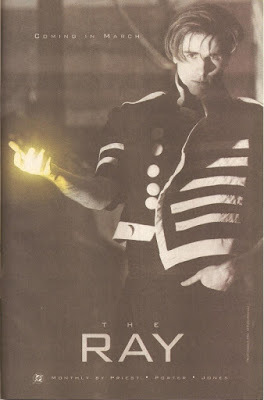 1994
1994
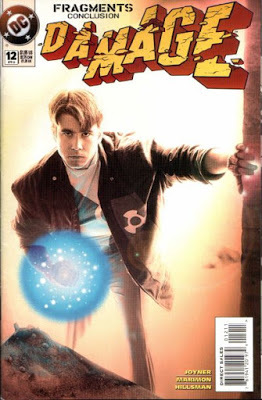 1995 (The Grand Comics Database says
1995 (The Grand Comics Database says
the model is named Chris Eades.)
(Those days seem light-years from the current landscape, where the CW's Arrowverse has included dozens of unlikely characters from Gypsy to Ragman and a DC streaming service launching later this year will bring us Hawk and Dove and Robotman.)
The entire decade, the only two capes to appear in feature films were Batman (plus Robin and Batgirl) and Steel. The TV shows were limited to Lois & Clark: The New Adventures of Superman, Superboy, Swamp Thing, The Flash, and Human Target, and only the first three lasted more than a season.
Oh, let's not forget the 1997 Baby Ruth commercial featuring...Hawkman?
Because of this dearth, it stood out even more when the print comics used live models to portray characters. Aside from Vertigo, it happened only twice that I can determine, once in an ad and once on a cover:
 1994
1994 1995 (The Grand Comics Database says
1995 (The Grand Comics Database says the model is named Chris Eades.)
Published on July 02, 2018 04:00
June 26, 2018
The children of the children in "Fairy Spell"
The two girls at the center of my book Fairy Spell: How Two Girls Convinced the World That Fairies Are Real are Frances and her cousin Elsie; the story starts in 1917 when they were, respectively, 9 and 16 years old. Frances passed away in 1986 and Elsie two years later.
Their children have been nothing but receptive to the book; as far as I can tell, it is the first picture book (in any country) on the subject. They agreed to pose with the copy I sent to them in the UK, and further agreed to let me post the photos here.
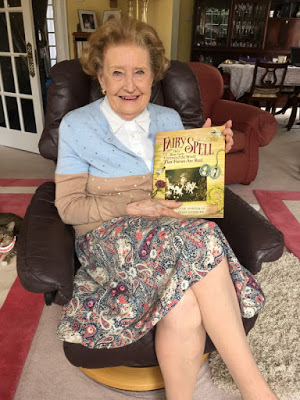 Christine Lynch (Frances's daughter), age 87
Christine Lynch (Frances's daughter), age 87
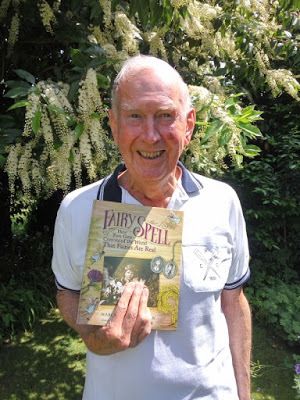 Glenn Hill (Elsie's only child), age 83
Glenn Hill (Elsie's only child), age 83
Chris added a charming footnote: "I plan to send [a copy] to little Princess Charlotte with a note saying it is from the daughter of the little girl in the [fairy photo]. A few years ago, I sent a book we published to Prince Charles and got a reply from his Private Secretary with a message from Charles himself—so you never know. It is such an English story that Kate might know it and might read your book to her."
I thanked her and said that I'm, of course, madly eager to see if we do get a response (even though I am not one of those who woke up crazy early to watch the latest—or any—royal wedding). But I made one small request: I asked Chris to address the book to all three children in the family—Charlotte and her brothers George and Louis. Fairies—and stories—are for everyone.
She cheerfully agreed to that, too.
Their children have been nothing but receptive to the book; as far as I can tell, it is the first picture book (in any country) on the subject. They agreed to pose with the copy I sent to them in the UK, and further agreed to let me post the photos here.
 Christine Lynch (Frances's daughter), age 87
Christine Lynch (Frances's daughter), age 87 Glenn Hill (Elsie's only child), age 83
Glenn Hill (Elsie's only child), age 83 Chris added a charming footnote: "I plan to send [a copy] to little Princess Charlotte with a note saying it is from the daughter of the little girl in the [fairy photo]. A few years ago, I sent a book we published to Prince Charles and got a reply from his Private Secretary with a message from Charles himself—so you never know. It is such an English story that Kate might know it and might read your book to her."
I thanked her and said that I'm, of course, madly eager to see if we do get a response (even though I am not one of those who woke up crazy early to watch the latest—or any—royal wedding). But I made one small request: I asked Chris to address the book to all three children in the family—Charlotte and her brothers George and Louis. Fairies—and stories—are for everyone.
She cheerfully agreed to that, too.
Published on June 26, 2018 04:00
June 25, 2018
Two special guests at a special speaking event
On 6/14/18, I did something old and new at the same time.
I gave my talk about the often-tragic backstories of Superman and Batman at the Raue Center for the Arts, a performance venue that has hosted notables from David Sedaris to Rick Springfield.
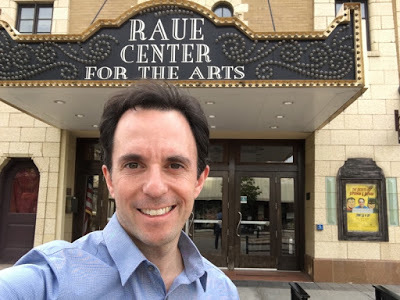
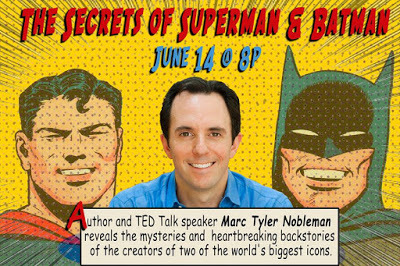
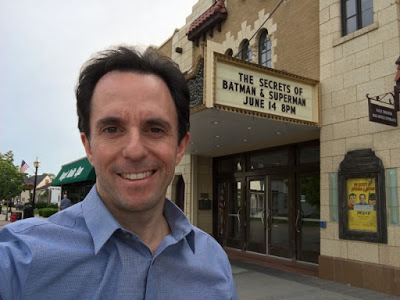
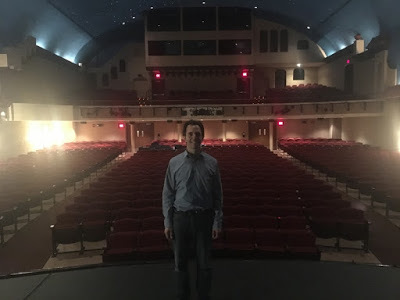
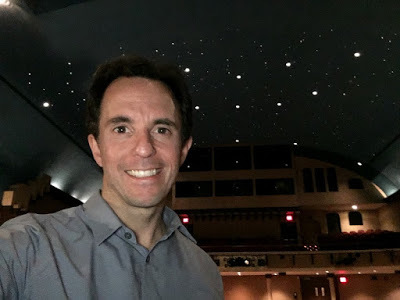
I've delivered a version of this presentation so many times, but never quite like this. That is to say that I've done evening events, I've done events where people actually paid to hear me speak, and I've done events in beautiful settings—but never, as far as I can recall, all at once. (And certainly never on a stage that has featured Los Lobos.)
Like many authors, I tend to go into events like this with low expectations (so as not to be disappointed if no one shows). The hall—originally a 1920s vaudeville theater, then a cinema—was not filled, but I was happy with the 50 or so people who attended.
Two in particular.
One was Lee Ann Marie, one of the women whom I interviewed because she appeared in a popular 1980s music video, Survivor's "I Can't Hold Back" (1984).
She could not stay for the talk but made a special surprise trip—with her mom—to say hi since she and I had not yet met in person. About 30 minutes before showtime, before the audience was let in, she walked down one of the unlit aisles of the Raue to introduce herself. It almost reminded me of one of her scenes from the video (see second black-and-white photo at that link)—sans smoke, of course.
It was so lovely to see her and meet her mother.

I knew in advance that the other special guest would be there, but that made it no less special. Her name is Hannah Klamecki. In 2007, she survived two days alone in the woods. She was 5 years old. In my 2010 book Vanished: True Stories of the Missing, I told her story.
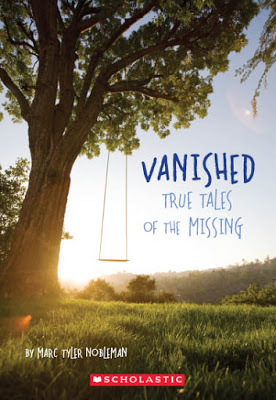
In 2012, when she was 11, I met her for the first time.
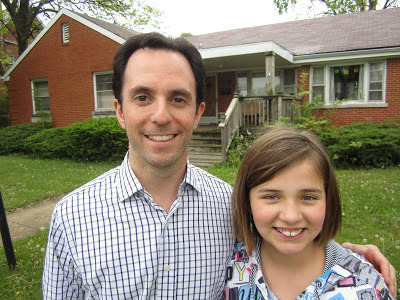
The Raue marked the second time I've seen her (and her wonderful parents, Mike and Carol) in person...and it was, by chance, the eve of the 11th anniversary of her rescue.
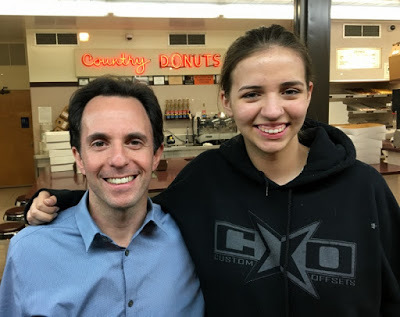
She's got a boyfriend, a nose ring, an admirable sense of self, and college plans. Oh, and she's got several inches on me.

I'm so proud of the person she's become and so honored that in telling her story, her family have become my friends.
I gave my talk about the often-tragic backstories of Superman and Batman at the Raue Center for the Arts, a performance venue that has hosted notables from David Sedaris to Rick Springfield.





I've delivered a version of this presentation so many times, but never quite like this. That is to say that I've done evening events, I've done events where people actually paid to hear me speak, and I've done events in beautiful settings—but never, as far as I can recall, all at once. (And certainly never on a stage that has featured Los Lobos.)
Like many authors, I tend to go into events like this with low expectations (so as not to be disappointed if no one shows). The hall—originally a 1920s vaudeville theater, then a cinema—was not filled, but I was happy with the 50 or so people who attended.
Two in particular.
One was Lee Ann Marie, one of the women whom I interviewed because she appeared in a popular 1980s music video, Survivor's "I Can't Hold Back" (1984).
She could not stay for the talk but made a special surprise trip—with her mom—to say hi since she and I had not yet met in person. About 30 minutes before showtime, before the audience was let in, she walked down one of the unlit aisles of the Raue to introduce herself. It almost reminded me of one of her scenes from the video (see second black-and-white photo at that link)—sans smoke, of course.
It was so lovely to see her and meet her mother.

I knew in advance that the other special guest would be there, but that made it no less special. Her name is Hannah Klamecki. In 2007, she survived two days alone in the woods. She was 5 years old. In my 2010 book Vanished: True Stories of the Missing, I told her story.

In 2012, when she was 11, I met her for the first time.

The Raue marked the second time I've seen her (and her wonderful parents, Mike and Carol) in person...and it was, by chance, the eve of the 11th anniversary of her rescue.

She's got a boyfriend, a nose ring, an admirable sense of self, and college plans. Oh, and she's got several inches on me.

I'm so proud of the person she's become and so honored that in telling her story, her family have become my friends.
Published on June 25, 2018 04:00
June 10, 2018
Fairy-go-round
It's June. It's fairy season!
Or perhaps every season is fairy season…
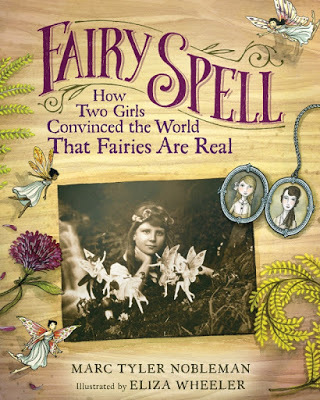
In honor of my newly released book Fairy Spell: How Two Girls Convinced the World That Fairies Are Real, a hodgepourri of fairy dust:
Fun British phrases I learned while researching the story (one of which made it into my book):
up the beck'tice the fairiesgo in the danceat the sides
"Not believe in Santa Claus! You might as well not believe in fairies!"
—newsman Francis Pharcellus Church to 8-year-old Virginia Hanlon, who wrote to the New York Sun editor to ask if Santa Claus was real, 1897
"Like fairies, hamburgers are famously difficult to photograph because they can take thousands of forms and wear a variety of sauces."
—Groupon 12/6/10 (promoting a restaurant called Z-Burger)
Interview clip of Frances and Elsie, the "Two Girls" of the subtitle, from Arthur C. Clarke's World of Strange Powers (aired in 1985, shortly before both died):
Now go outside and look for the real thing.
Or perhaps every season is fairy season…

In honor of my newly released book Fairy Spell: How Two Girls Convinced the World That Fairies Are Real, a hodgepourri of fairy dust:
Fun British phrases I learned while researching the story (one of which made it into my book):
up the beck'tice the fairiesgo in the danceat the sides
"Not believe in Santa Claus! You might as well not believe in fairies!"
—newsman Francis Pharcellus Church to 8-year-old Virginia Hanlon, who wrote to the New York Sun editor to ask if Santa Claus was real, 1897
"Like fairies, hamburgers are famously difficult to photograph because they can take thousands of forms and wear a variety of sauces."
—Groupon 12/6/10 (promoting a restaurant called Z-Burger)
Interview clip of Frances and Elsie, the "Two Girls" of the subtitle, from Arthur C. Clarke's World of Strange Powers (aired in 1985, shortly before both died):
Now go outside and look for the real thing.
Published on June 10, 2018 04:00
June 9, 2018
Interview with Ernie Contreras, screenwriter of "FairyTale" (1997)
Both my book Fairy Spell: How Two Girls Convinced the World That Fairies Are Real and the 1997 film FairyTale: A True Story are based on the Cottingley fairies incident of 1917 England.
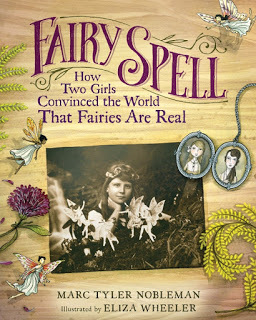
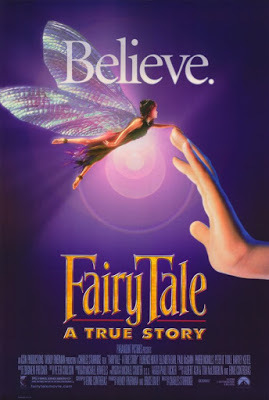
Ernie kindly agreed to an interview (conducted in 2015 and held till now, since the book released this year).
How did you get the job to co-write the FairyTale script?
The script wasn't co-written. I wrote the screenplay. Story credit I shared with Albert and Tom. "Screenplay by" and "story by" are different credits entirely.
At the time my agents at CAA set a meeting with producer Wendy Finerman who had a fairy project they thought I might be interested in writing. The project was originally brought to Wendy by Albert and Tom. They'd worked up a story proposal based on the Cottingley fairy scenario. I was intrigued and signed on.
Initially I fleshed out a story outline from Albert and Tom's original material and my own research and then pitched it out to the major studios. Paramount bought the pitch and I was cleared to write the screenplay.
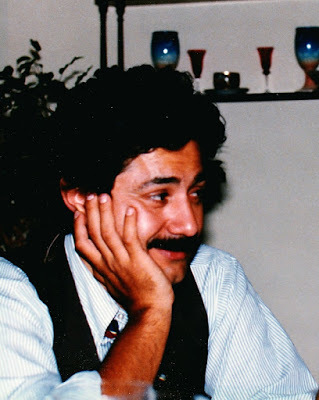
Do you remember if you'd heard of the Cottingley fairies before being hired?
I was reminded the subject had come up at party years earlier, but I had no recall of the mention at the time I was brought in.
Were you ever in touch with the families of Frances or Elsie?
No, I was never in touch with the families.
What was the hardest part of writing the script?
I don't recall parts being "hard" to write. Once the story was set, the characters came to life and pretty much took over. It's not always like that.
Do you remember why you incorporated major elements that were not part of the real-life story (namely Houdini and Joseph, a brother of Elsie)?
If I remember correctly, Sir Arthur and Houdini had corresponded over the matter of publishing the fairy photos. Houdini's roll was expanded because at the time he was the grand de-bunker of spiritual fraud. He was the perfect skeptic and he held moral ground for that side of the equation.
Joseph anchored loss inside the Wright home. Originally, Joseph was a soldier lost to the war; this to bring home the devastation of a war that wiped out a generation of youth and put belief on the ropes. The director changed him to a brother who died of illness as I recall.
Do you remember why you chose not to explicitly reveal how the fairy photos were taken?
As far as I remember the director altered that course. I was not consulted.
Any funny stories about the process?
None that I recall.
What did you think of the movie?
For the most part I was pleased. Technically, it was superb.
Do you remember any reviews of the film that were especially meaningful?
I try to keep reviews at arms distance; good or bad they're out of my control.
Do you remember/have you saved any criticism of the film that was especially frustrating?
Have I saved frustrating criticism? No point in that.
What are you doing these?
I continue to write. I recently adapted a book, Elephant Winter, and I have a semi-autobiographical story, Last Night in East L.A., both in the process of acquiring funding. I'm involved in a number of other projects, mostly industry-based. I also teach, consult, and lecture.
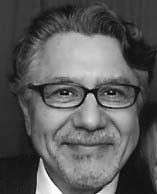
Where do you live?
The Hollywood Hills.
When was the last time you saw the movie? How did it hold up for you?
It's been years since I last saw FairyTale beginning to end. I catch snippets when it loops through the cable channels. It holds up all right, though I tend to dwell on parts I would have done differently or changes made by the director that rip at my heart.
Do you believe in anything that hasn't yet been proven by science (including fairies)?
My faith continues to evolve. I'm open to miracles.
What did you think when you first heard from me?
Are you legit?
Has anyone else ever interviewed about this? If so, when and for what publication?
The movie has come up in interviews, but nothing specific. At one point I was approached about adapting it to the stage, but nothing ever came of that.
How do you look back on the experience?
Getting a studio movie made is a miracle in itself, so I'm grateful for that. The process up to production was amazingly straightforward. We knew what we had and everyone up and down the line was on board. The first director was my personal fairy tale choice, Lasse Hallström. Lasse and I worked together in Stockholm making final revisions. Soon before production, I get word that Lasse's out over budgetary concerns. Paramount recirculated the script and it was nabbed by Mel Gibson's Icon Productions. They took over, hired a new director who expressed no need for writer input. From this point on, I'm out.
My look back is bittersweet. No regrets.
Anything you'd like to add?
If I could only change that one scene…


Ernie kindly agreed to an interview (conducted in 2015 and held till now, since the book released this year).
How did you get the job to co-write the FairyTale script?
The script wasn't co-written. I wrote the screenplay. Story credit I shared with Albert and Tom. "Screenplay by" and "story by" are different credits entirely.
At the time my agents at CAA set a meeting with producer Wendy Finerman who had a fairy project they thought I might be interested in writing. The project was originally brought to Wendy by Albert and Tom. They'd worked up a story proposal based on the Cottingley fairy scenario. I was intrigued and signed on.
Initially I fleshed out a story outline from Albert and Tom's original material and my own research and then pitched it out to the major studios. Paramount bought the pitch and I was cleared to write the screenplay.

Do you remember if you'd heard of the Cottingley fairies before being hired?
I was reminded the subject had come up at party years earlier, but I had no recall of the mention at the time I was brought in.
Were you ever in touch with the families of Frances or Elsie?
No, I was never in touch with the families.
What was the hardest part of writing the script?
I don't recall parts being "hard" to write. Once the story was set, the characters came to life and pretty much took over. It's not always like that.
Do you remember why you incorporated major elements that were not part of the real-life story (namely Houdini and Joseph, a brother of Elsie)?
If I remember correctly, Sir Arthur and Houdini had corresponded over the matter of publishing the fairy photos. Houdini's roll was expanded because at the time he was the grand de-bunker of spiritual fraud. He was the perfect skeptic and he held moral ground for that side of the equation.
Joseph anchored loss inside the Wright home. Originally, Joseph was a soldier lost to the war; this to bring home the devastation of a war that wiped out a generation of youth and put belief on the ropes. The director changed him to a brother who died of illness as I recall.
Do you remember why you chose not to explicitly reveal how the fairy photos were taken?
As far as I remember the director altered that course. I was not consulted.
Any funny stories about the process?
None that I recall.
What did you think of the movie?
For the most part I was pleased. Technically, it was superb.
Do you remember any reviews of the film that were especially meaningful?
I try to keep reviews at arms distance; good or bad they're out of my control.
Do you remember/have you saved any criticism of the film that was especially frustrating?
Have I saved frustrating criticism? No point in that.
What are you doing these?
I continue to write. I recently adapted a book, Elephant Winter, and I have a semi-autobiographical story, Last Night in East L.A., both in the process of acquiring funding. I'm involved in a number of other projects, mostly industry-based. I also teach, consult, and lecture.

Where do you live?
The Hollywood Hills.
When was the last time you saw the movie? How did it hold up for you?
It's been years since I last saw FairyTale beginning to end. I catch snippets when it loops through the cable channels. It holds up all right, though I tend to dwell on parts I would have done differently or changes made by the director that rip at my heart.
Do you believe in anything that hasn't yet been proven by science (including fairies)?
My faith continues to evolve. I'm open to miracles.
What did you think when you first heard from me?
Are you legit?
Has anyone else ever interviewed about this? If so, when and for what publication?
The movie has come up in interviews, but nothing specific. At one point I was approached about adapting it to the stage, but nothing ever came of that.
How do you look back on the experience?
Getting a studio movie made is a miracle in itself, so I'm grateful for that. The process up to production was amazingly straightforward. We knew what we had and everyone up and down the line was on board. The first director was my personal fairy tale choice, Lasse Hallström. Lasse and I worked together in Stockholm making final revisions. Soon before production, I get word that Lasse's out over budgetary concerns. Paramount recirculated the script and it was nabbed by Mel Gibson's Icon Productions. They took over, hired a new director who expressed no need for writer input. From this point on, I'm out.
My look back is bittersweet. No regrets.
Anything you'd like to add?
If I could only change that one scene…
Published on June 09, 2018 04:00
May 15, 2018
Every student reads with the principals, every student donates a book
When Paulette Torpey became the librarian of Vienna Elementary in Vienna, VA about five years ago, she told the principal, John Carmichael, that many of the books in the library collection were old and worn. Paulette estimated it would take quite a few years with the budget from the county to get the collection in better shape.
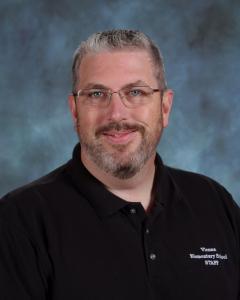 John Carmichael
John Carmichael
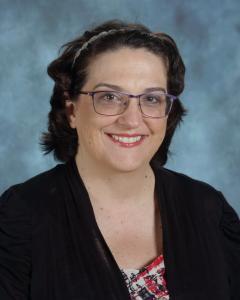 Paulette Torpey
Paulette Torpey
This gave John had an idea.
Every other year, John and Eben Montaquila, the assistant principal, request funds from the PTA for Paulette to buy books—to be precise, the same number of books as students in the school. This school year it was around 500 books.
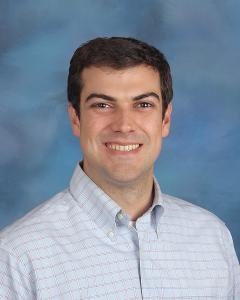 Eben Montaquila
Eben Montaquila
A couple of times a week throughout the school year, students (four at a time, starting with 6th grade and moving down the grade scale) are invited to read with both administrators—meaning the ones doing the reading are the students (except kindergarten; they are still read to).
Plus every student gets to select one of the newly purchased books and sign her/his name inside before it is added to the collection. Students are so excited to check out the books that they and their classmates have "donated" to the library.
This way, both the collection and the community actively grow at the same time.
Earmarking dollars to improve a library collection is, of course, wonderful. Kudos to John and Eben for going even further in their commitment to literacy. The fact that the heads of the school personally share books with kids on a weekly basis sends a powerful and consistent message about how important it is to read.
And kudos to Paulette for helping inspire the idea (and for allowing me to share it here).
 John Carmichael
John Carmichael Paulette Torpey
Paulette TorpeyThis gave John had an idea.
Every other year, John and Eben Montaquila, the assistant principal, request funds from the PTA for Paulette to buy books—to be precise, the same number of books as students in the school. This school year it was around 500 books.
 Eben Montaquila
Eben MontaquilaA couple of times a week throughout the school year, students (four at a time, starting with 6th grade and moving down the grade scale) are invited to read with both administrators—meaning the ones doing the reading are the students (except kindergarten; they are still read to).
Plus every student gets to select one of the newly purchased books and sign her/his name inside before it is added to the collection. Students are so excited to check out the books that they and their classmates have "donated" to the library.
This way, both the collection and the community actively grow at the same time.
Earmarking dollars to improve a library collection is, of course, wonderful. Kudos to John and Eben for going even further in their commitment to literacy. The fact that the heads of the school personally share books with kids on a weekly basis sends a powerful and consistent message about how important it is to read.
And kudos to Paulette for helping inspire the idea (and for allowing me to share it here).
Published on May 15, 2018 04:00



